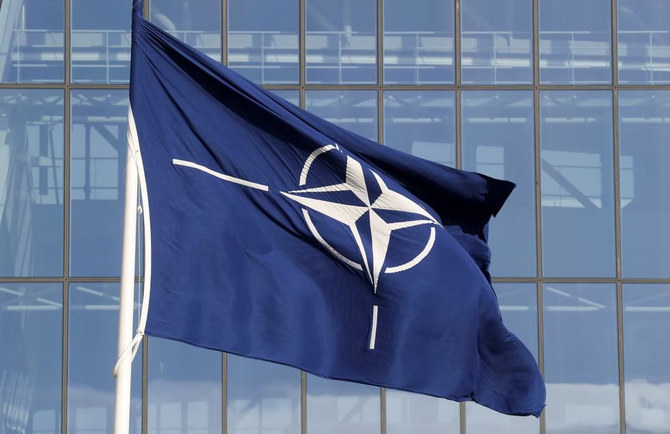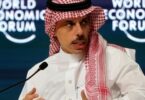Andrew Hammond
Much media bandwidth has been taken up in the past year or so by the economic repercussions of Russia’s invasion of Ukraine. However, the conflict is also redrawing Europe’s military map, which is a pressing issue in the run-up to NATO’s annual leadership summit this month.
The most prominent development has been Finland’s incorporation into the Western military alliance, and also the pending accession of Sweden. Moreover, Denmark, which is already a NATO member, voted last year to scrap an opt-out clause that for three decades kept it out of the EU’s common defense policy.
These are huge changes for nations with a history of wartime neutrality and/or keeping a distance from military alliances.
Russia’s invasion shattered a long-standing sense of stability in Northern Europe, leaving Denmark, Sweden and Finland, among others, feeling vulnerable.
The irony, of course, is that far from achieving his aim of less of a NATO presence on his doorstep, Russian President Vladimir Putin now has more NATO than ever in his neighborhood, including just across the 830-mile border with Finland.
While the Finnish, Swedish and Danish developments are particularly striking, there has been a much wider rethinking of the European security landscape. This includes debates in other countries with non-NATO, “neutral” status, including Switzerland, Ireland, Austria and Malta.
These four nations have joined the European sanctions against Russia and this has had consequences, particularly for non-EU member Switzerland. Russia’s ambassador to the country, Sergei Garmonin, has said, for example, that Moscow will no longer accept any Swiss-hosted peace summit on Ukraine’s future, as had been proposed by President Volodymyr Zelensky, on the grounds that the nation’s reputation for neutrality has been damaged.
More fundamentally, there has been a significant increase in military spending across Europe. Germany, for example, has announced major new investment in its military and reversed a post-war policy that prevented it from sending lethal weapons to conflict zones.
This transformation has been encouraged by European Commission President Ursula von der Leyen, a former German defense minister who has advocated for the establishment of a combined European army. She wants the bloc to become a more muscular global power and has emphasized the degree to which the conflict in Ukraine is “fundamentally challenging” Europe’s peace architecture.
It is not only the situation in Ukraine that is driving these shifts, however, but also a wider threat landscape, including Western concerns about China. Moreover, Brexit eliminated a longstanding obstacle to greater European cooperation in the security sphere, given that successive UK governments had long opposed deeper defense integration at the EU level.
Add to this, too, the uncertainty about transatlantic ties that arose during the presidency of Donald Trump.
Concerns about this across the continent have not gone away, given fears that the result of the 2016 presidential election that put him in the White House might be repeated in 2024.
Certainly, the EU still has a long way to go before it becomes the strategically autonomous goliath championed by some. But the tide is turning and it is against this backdrop that the NATO summit takes place this month.
After coming under the most strain it has endured in its seven-decade history, during Trump’s presidency, the transatlantic alliance’s own fortunes have also shifted significantly in the past year or so. US officials, including former National Security Adviser John Bolton, have confirmed that Trump came close to announcing a US withdrawal from NATO, an organization co-created by Washington in the immediate aftermath of the Second World War, which would have been a severe body blow to its future credibility.
The nadir of that troubled period came during the extraordinary scenes in 2018 when, as Trump threw the alliance’s annual summit into disarray by threatening to withdraw, a series of key announcements and press conferences were canceled.
To make matters worse, Trump not only criticized NATO colleagues but in the days that followed had a cordial meeting with Putin in Helsinki. This alarmed not only Canada and Washington’s Western European allies, but sent a chill down the spines of authorities in Eastern European states, many of which were formerly part of the Soviet Union.
Yet, the challenges within NATO during the Trump era were by no means only of his making. One of his critiques of the alliance, that more than half of its members at the time did not spend the prescribed 2 percent of their gross domestic product on defense, was a longstanding sore point that other US presidents had highlighted.
Moreover, Trump was not the only alliance leader to criticize NATO around that time. Take, for example, French President Emmanuel Macron’s astonishing assertion in 2019 that the organization was experiencing “brain death.”
Fast forward to 2023, however, and the crisis in Ukraine, coupled with concerns about China, have underscored the continuing relevance of this Western alliance of countries with a collective population of about 1 billion. For all its weaknesses, NATO remains one of the world’s most successful military alliances and it has helped underpin the longest period of sustained peace in the modern history of the West.
There will be a huge show of unity during the two-day summit on July 11-12, and there is the possibility of an announcement about a pathway to membership for Ukraine. Moreover, in face of new challenges — and opportunities — the alliance is already recalibrating its strategic direction. During recent summits, for instance, new perceived threats such as China have been formally discussed for the first time.
One other bonus development for the prospect of improved intra-alliance harmony is that the longstanding burden-sharing issue — which was perhaps Trump’s biggest gripe, given that the US funds about two thirds of total NATO defense spending — might be moving closer to resolution. Many NATO states are pushing ahead with significant increases in defense spending, including much of the EU membership.
Taken overall, the NATO summit will seek to bring a stronger sense of solidarity to the alliance. Yet, as much as there will be a significant show of unity, the organization still faces some major challenges during its eighth decade, with its immediate fortunes resting largely on the outcome of the conflict in Ukraine.







